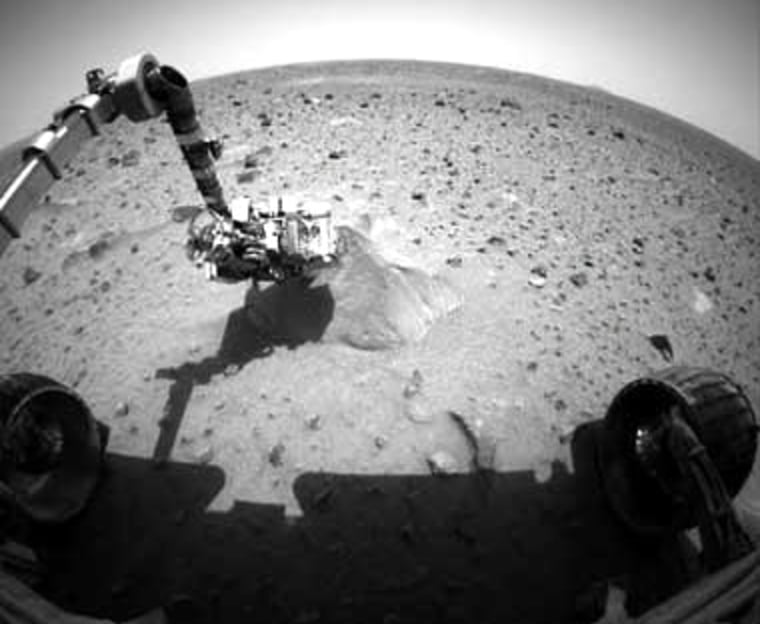The Spirit rover has used its entire “Swiss army knife” tool kit for the first time to analyze the composition of the martian soil, scientists said Tuesday.
NASA scientists said the examination revealed as many questions as answers.
“We have now a number of hypotheses about what’s going on in the Martian soil,” said Steve Squyres, principal investigator from Cornell University, describing the soil analysis that the rover conducted on Monday.
The six-wheeled robot turned its attention Tuesday to the large, sharply angled rock scientists have dubbed “Adirondack.” Results of that testing were expected on Wednesday.
The Spirit rover is being used to examine its surroundings in the Gusev Crater as scientists search for evidence that the planet’s surface once had liquid water.
“We don’t know that this soil came from the Gusev Crater. The stuff could have come from somewhere else. It’s going to be very interesting to dig some holes and see if it looks the same” deeper down, Squyres said.
One instrument told scientists the soil contained a mixture of materials that included a mineral called olivine.
Scientists were surprised to find olivine, which is usually associated with volcanic eruptions, said Squyres. Mission members now believe the soil could be a layer of finely ground lava, he said.
“That would be a surprise to me,” he said. “I think we’re going to learn wonderful things by using the wheels to scrape and push” the soil away to see what’s underneath.
Another tool detected the elements iron, argon, sulfur, chlorine, nickel and zinc in the soil, said Johannes Brueckner of Germany’s Max Planck Institute for Chemistry.
Most of the minerals had been noted during previous Mars expeditions, but this is the first time scientists have detected nickel and zinc, he said.
Spirit extended its robotic arm Tuesday and placed a drilling tool against the surface of the “Adirondack” rock to test the drill’s position, said Jennifer Trosper, mission manager for NASA’s Jet Propulsion Laboratory.
Mission members were still deciding whether to use the tool to drill into the rock see if its inner composition matches readings they were collecting from its exterior using other instruments.
Scientists believe the rock is made of a volcanic rock called basalt.
“You can think of it as a time capsule that contains a history of its formation,” said Dave Des Marais of NASA’s Ames Research Center.
Trosper said the rover was doing remarkably well and was transmitting an “incredible amount of data. It’s like we got an Internet upgrade overnight.”
Spirit’s twin, Opportunity, is due to land Saturday on Meridiani Planum, which lies halfway around the planet from Spirit’s Jan. 3 landing site in Gusev Crater.
